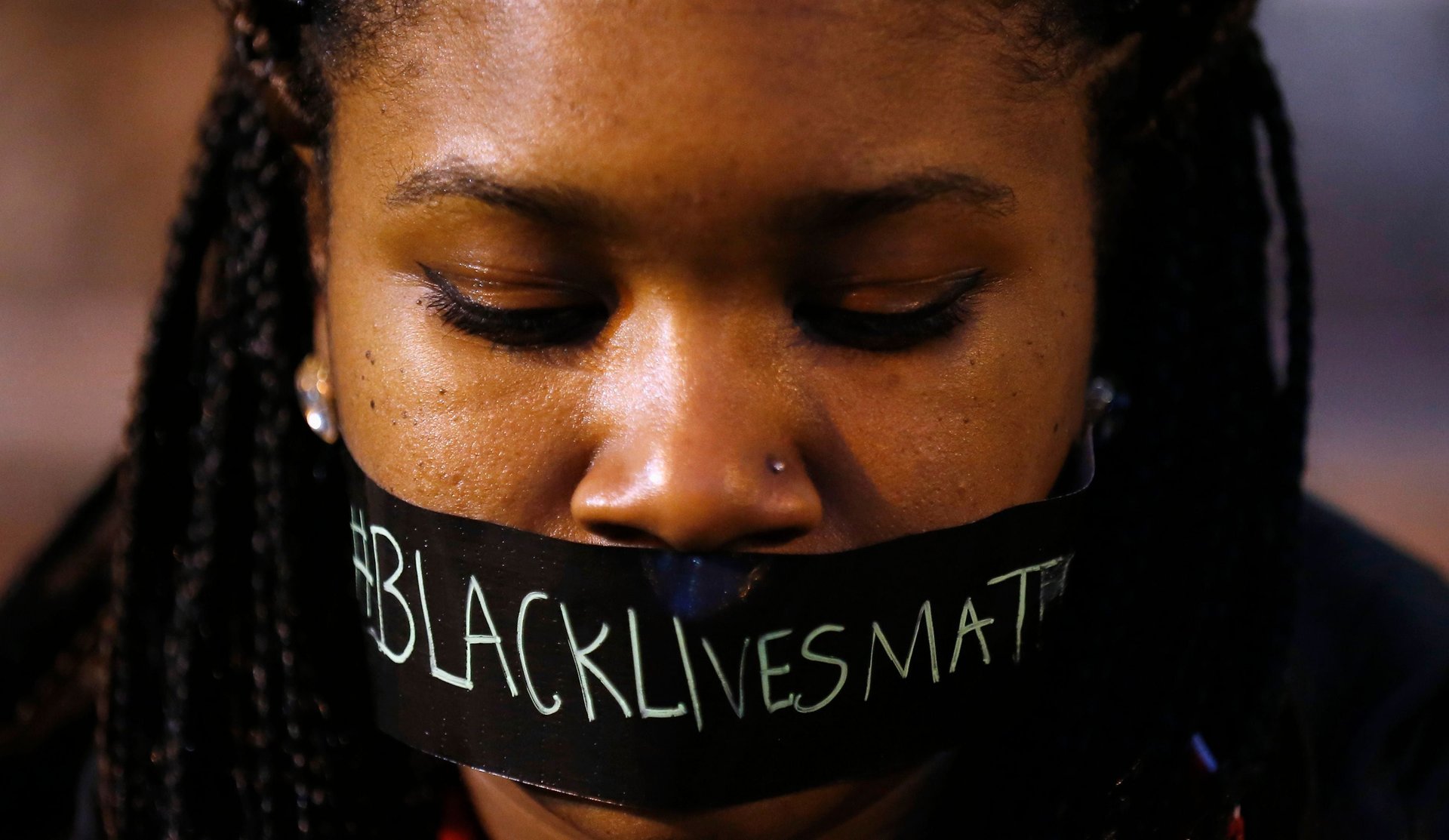US history explains that white fear is just another way to enforce racial segregation
University students often keep late hours—so it’s unsurprising to see them asleep amidst books and papers in libraries and common rooms. And yet, when a white Yale student saw Lolade Siyonbola, a black graduate student, had drifted off while writing a paper in their dorm’s common room, she assumed something was wrong—and called the police.


University students often keep late hours—so it’s unsurprising to see them asleep amidst books and papers in libraries and common rooms. And yet, when a white Yale student saw Lolade Siyonbola, a black graduate student, had drifted off while writing a paper in their dorm’s common room, she assumed something was wrong—and called the police.
The incident, which took place in the early morning hours of May 8, is one of several recent encounters to shine a spotlight on the daily realities of being black in a shared space. In Oakland, California, a white person called the police on black people barbecuing. In Rialto, California, a white neighbor called the police on a group of black women checking out of their Airbnb rental because they hadn’t waved at her. In Memphis, Tennessee, a white woman called the police on a black real-estate investor.
These incidents expose an important truth about race relations in the US: White people regularly call the police on black people who are doing nothing wrong not only because of misplaced fear, but as a method of regulating access to shared space.
Calling the police in these instances is about having “the power to say you don’t belong here,” says Naomi Adiv, a professor of urban studies and planning at Portland State University, whose research explores power dynamics in public spaces. Adiv says that the issue of who is feared, and who is seen as having a “right” to be in a certain space, is deeply intertwined with race and the US history of segregation.
Firstly, white people’s fearful reactions to people of color is, itself, a means of dictating who gets to feel comfortable in a public space. In a 2004 study on American men’s experience of being feared in public spaces, researcher Kristen Day found a stark difference in responses from white men and men of color. While a few white men said they were not aware of ever being feared by others as they moved through a public space, no black and Hispanic respondent was able to say the same.
The study was small; Day interviewed 84 men. But the in-depth interviews she carried out highlight the racial divide in how white men, as opposed to men of color, experience shared spaces. When asked to explain why they believed others didn’t fear them, white male respondents said they were “nice guys” who had “good personalities,” “nice smiles,” or even “good karma.” Black men, on the other hand, were painfully conscious of how they were read in public spaces, regardless of their personalities, clothing, or facial expressions. Day concludes that the ability to see yourself as an individual in a public space is itself a privilege reserved for white people.
In addition, contemporary attempts to regulate black people in shared spaces can be linked back to the US history of racial segregation. While legal segregation was struck down more than 50 years ago, American society is still rife with overwhelmingly white neighborhoods, malls, schools, restaurants, universities, workplaces, religious institutions and other associations. Desegregation efforts didn’t bring about actual racial integration, as Kevin Kruse, a history professor at Princeton University, notes in his 2005 paper. Instead, it created “a new division in which the public world was abandoned to blacks and a new private one was created for whites.”
Kruse notes that the desegregation of public pools in Atlanta, Georgia, “went smoothly not because whites accepted the decision but because they had decided, once again, to flee these desegregated public spaces.” White people joined private clubs or built pools in their backyards, recreating for themselves a “safe”—that is, segregated—space.
This de facto segregation has reinforced a situation it which it is the norm for black people to be “typically absent, not expected, or marginalized when present” in shared spaces ranging from Ivy League universities to middle-class suburbs, Elijah Anderson, a sociology professor at Yale University, notes in his 2015 paper (pdf). It’s in these spaces where many social rewards lie, from having a nice night out on the town to accessing good education, employment, and money. There are severe consequences when black people enter these white spaces.
“Almost any white person present in the white space can possess and wield this enormous power” of excluding or bringing harm to black people who enter these spaces, Anderson notes in his paper. “And those who feel especially exercised and threatened by the rise of blacks may feel most compelled to wield that power.” For some white people, the presence of a black person in a shared, white-dominated space becomes a threatening symbol of black advancement at the expense of whites. “While certainly not all are guilty of such acts, many can be mobilized in complicity to ‘protect’ the white space,” he adds.
Today, “protecting” the white space often takes the form of making an unnecessary phone call to the police. “Racism is always about power,” says Adiv. The incident at Yale is a stark reminder of the lengths to which some white people are willing to go to ensure that black people feel out of place.